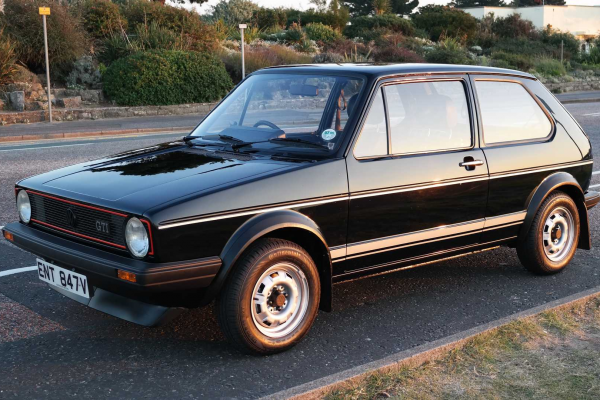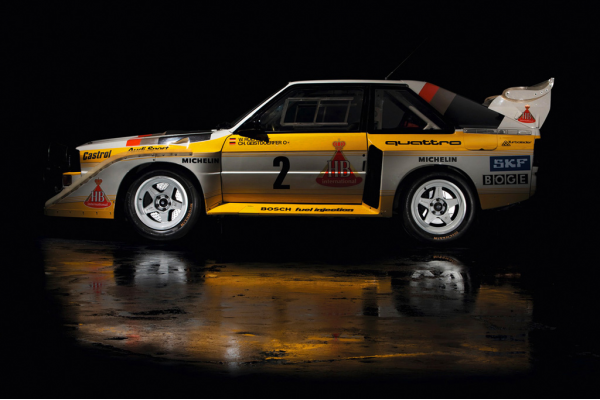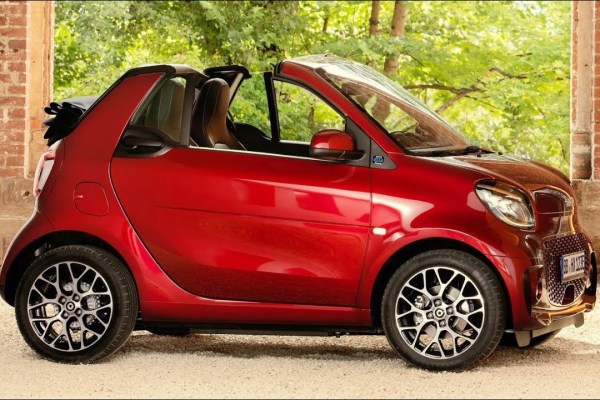
Golf GTI
The Volkswagen Golf GTI MK1 the first hot hatchback to prove that the formula for a front-engined, family-sized, small performance car worked
By the the ‘80s, Volkswagen had dominated the small performance car market. Why fix something that isn’t broken?
The formula served as the perfect base for Generation X drivers looking to stand out.
The Golf GTI was a left-field option because it did not initially have the reputation of other cars designed for a younger audience. However, there is an understanding in the car community that the Golf GTI is “the best” in its field. This was solidified with the MKII. The new model was bigger, faster, and as a result more desirable than the MKI. It produced 139 BHP in its most standard GTI form. The more powerful twin-cam 16-valve, the all-wheel-drive Rallye G60 with a 160 BHP supercharged engine, the limited-to-70, 210 BHP Golf Limited, are just a few that are now incredibly sought-after.
The MKII was one of the definitive cars of the 1980s. From the late ‘80s and into the mid-’90s, the U.K. car scene was dominated by hot hatchbacks because the boy racing scene was thriving. Like its predecessor, the MKII was a great platform for many looking to experiment with their new purchase.
By 1992, Volkswagen had moved onto the lackluster MKIII Golf. This model could not hold the flame to the MKII, and subsequently, it never became something special.
Volkswagen had lost its way with the Golf GTI when it introduced the MKIV in 1997. The GTI spec was an optional extra rather than a standalone car, which was a huge knock to the GTI purists and a disservice to the car’s legacy. The model never got the power it desperately needed. The only saving grace for the MKIV was the R32 — a VR6-powered, 237 BHP model that was often a poster child for hot hatchery served in “Deep Blue Pearl,” gracing the walls of pubescent millennials and their TV screen as they played Gran Turismo 4.
The Turning Point
In 2004, the sound of a turbocharged engine was music to enthusiasts’ ears. The classic had returned with full force, equipped with a turbo for the first time in its history.
The Volkswagen Golf GTI MKV was an homage to what the MKI brought — affordability, power, practicality and reliability. The MKV also made an impact in the car scene. “The VW Golf and GTI have always made a statement. It says, ‘I’m small, but I’m sophisticated.
Inside the MKV, you’d find tartan cloth seats and a golf ball gear knob, just like the original. On the outside, VW added a red trim around the grille and gave the body a subtle, yet brutish design that channeled the energy of the MKI. It felt like the VW Golf GTI that had been missing for so long.
The MKV also came in a dizzying amount of versions. Like its predecessor, it also came as an R32, making near-as-makes-no-difference 250 BHP. With its four-wheel-drive system and a tech-heavy DSG gearbox, the model could do 0-62 MPH in just 6.2 seconds. Big figures for a small yet mighty car.
Then there was the GTI Edition 30, which was a homologation model marking the GTI’s 30th anniversary. Volkswagen also produced the GTI Speed Edition, which took colors from Lamborghini’s swatch card and added it to the MKV, as the Volkswagen Group owns Lamborghini, along with Audi, Bentley, Bugatti and Porsche.
It featured the six-liter W12 bi-turbo engine from the Bentley Continental GT delivering 650 HP, the front brakes from the Audi RS4, the rear brakes and an axle from a Lamborghini Gallardo.
2008 saw the release of the MKVI. The MKVI Golf R was the replacement for the previous R32. It packed a 270 HP four-cylinder engine, all-wheel-drive, and could hit 62 MPH in 5.5 seconds. For reference, a 2009 Ford Mustang GT hit the same speed in 5.3 seconds.
The Golf R (MKVI, MVII and MKII.5) have become a tuner’s paradise. VW itself has even teased the potential 400-plus BHP Golf R Plus, knowing full-well it’d sell in a climate of rivals filled with Mercedes-Benz AMG A45s and Audi RS3s pumping out 415 BHP and 400 BHP respectively.
The 2000s was a turning point for Volkswagen. VW had found the GTI’s legacy and pedigree again. By the time the almighty Golf R arrived, VW had regained its crown as the definitive hot hatch manufacturer — although other cars are quicker (an Audi RS3, perhaps), and some are even cheaper (Ford Focus RS, Renault Megane R.S.), nothing could evoke the nostalgia or the energy of Golf GTI.
No matter what specification your Golf is, it’s owning a piece of history that counts.


